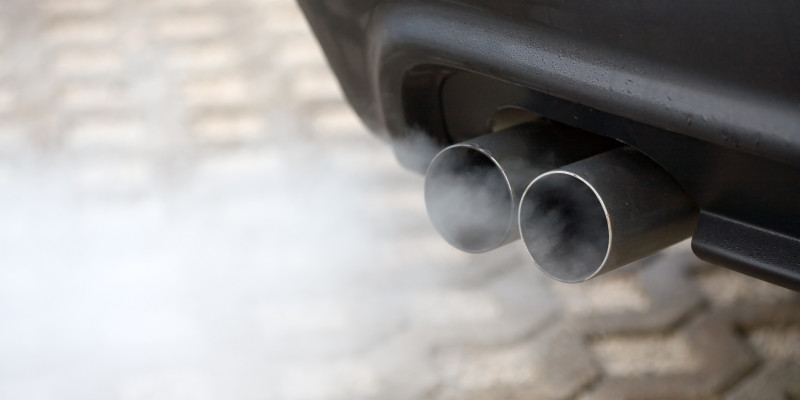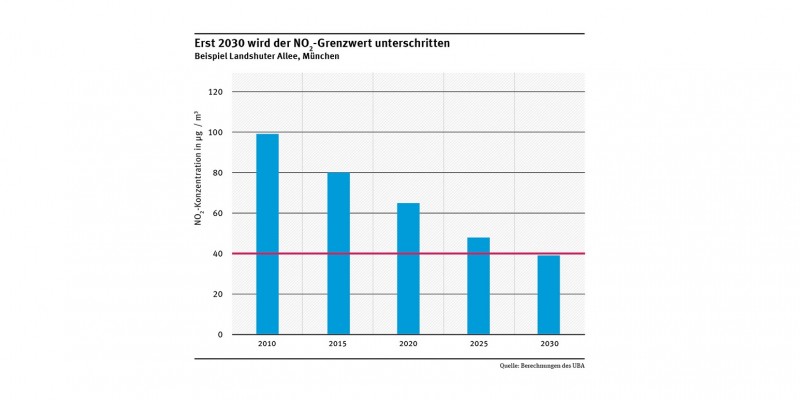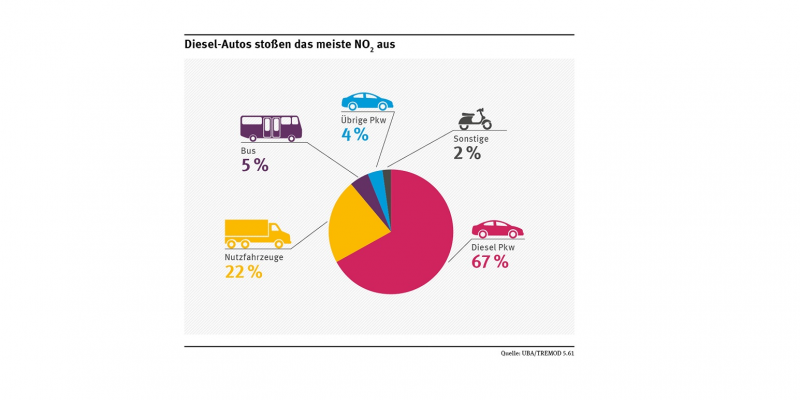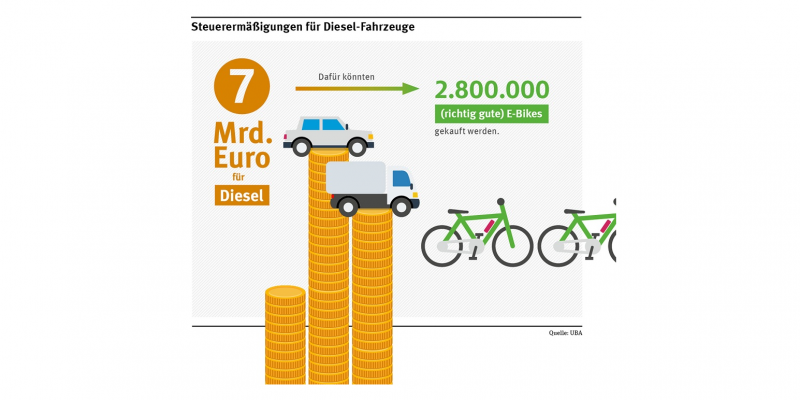Nitrogen dioxide is still the polluting the air in Germany’s cities. It is especially harmful to people who suffer asthma and can trigger shortness of breath and bronchitis. Calculations by UBA show that if no further measures are taken in areas with the highest levels of NO2 pollution (on Landshuter Allee in Munich, for example), it will only be possible to reach an annual mean limit of 40 micrograms per cubic metre of air around 2030. This is the earliest time at which a renewal of the vehicle fleet with diesel cars with low real driving emissions will become effective. "Our recommendation for policy makers is to enable local authorities to take measures which will reduce nitrogen dioxide pollution in city centres quickly. This would include prohibiting the entry of old diesel cars, also those up to pollutant emission category Euro 5, into the existing low-emission zones of metropolitan areas", said Maria Krautzberger. She hereby addressed an issue which met with very little support for the Federal Environment Ministry from the Land ministries at the last environmental conference in Augsburg held in late October.
Ms Krautzberger announced that the UBA would do spot checks of exhaust emission measurements to review whether the new limit values will be effective in operation. She also campaigned for electric mobility, for bicycles and cars and buses alike. Electric mobility in operation generates no emissions, neither harmful nitrogen oxides nor carbon dioxide.
Ms Krautzberger said, “I am in favour of gradually aligning the tax on diesel fuel with the petrol tax and thereby achieving the desired results to protect the environment and climate.” The privileged status of diesel fuel in the energy tax costs the state an annual seven billion euros in revenues. “It must be determined whether only private vehicles are affected and to exclude the logistics sector.” The tax levied on diesel is 18.4 cents per litre less than petrol. Diesel-fuelled vehicles cause considerably more harm to the environment and health than petrol cars, with a price tag of 33 billion euros per year.
Nitrogen compounds are not only a problem for air, they also impact water. More than one fourth of the water bodies in Germany have poor chemical status and nitrate levels which exceed the limit value of 50 milligrams per litre. Nitrate is harmful to the health of infants and toddlers in particular. Although the levels in drinking water are still below limit values, it may soon nevertheless become necessary to process drinking water at high cost. Intensive livestock farming and excessive fertilisation are the main causes of high nitrate levels. The Schwerpunkte 2015 publication points out the measures which must be taken to keep water clean. Examples: an animal diet which is one percent lower in protein would reduce nitrogen and ammonia emissions by ten percent; when spreading manure on fields, it must be mixed with the soil within one hour.
Waste is another topic addressed in the What Matters publication. A large proportion of waste in Germany is building rubble, produced at a volume of 50 million tonnes per year, equivalent to the mass of some 180,000 single family houses. Recycling this rubble would save utilization of new gravel mining areas on a scale of approx. 350 football pitches every year. Most of the building rubble is used as fill in road construction, but UBA research has shown it will not be available for use in future on the scale that it is utilized today. Demolished concrete should therefore be recycled to a high standard, for example for use as quality-assured, recycled aggregates in concrete for building construction.
 Click to enlarge
Click to enlarge




